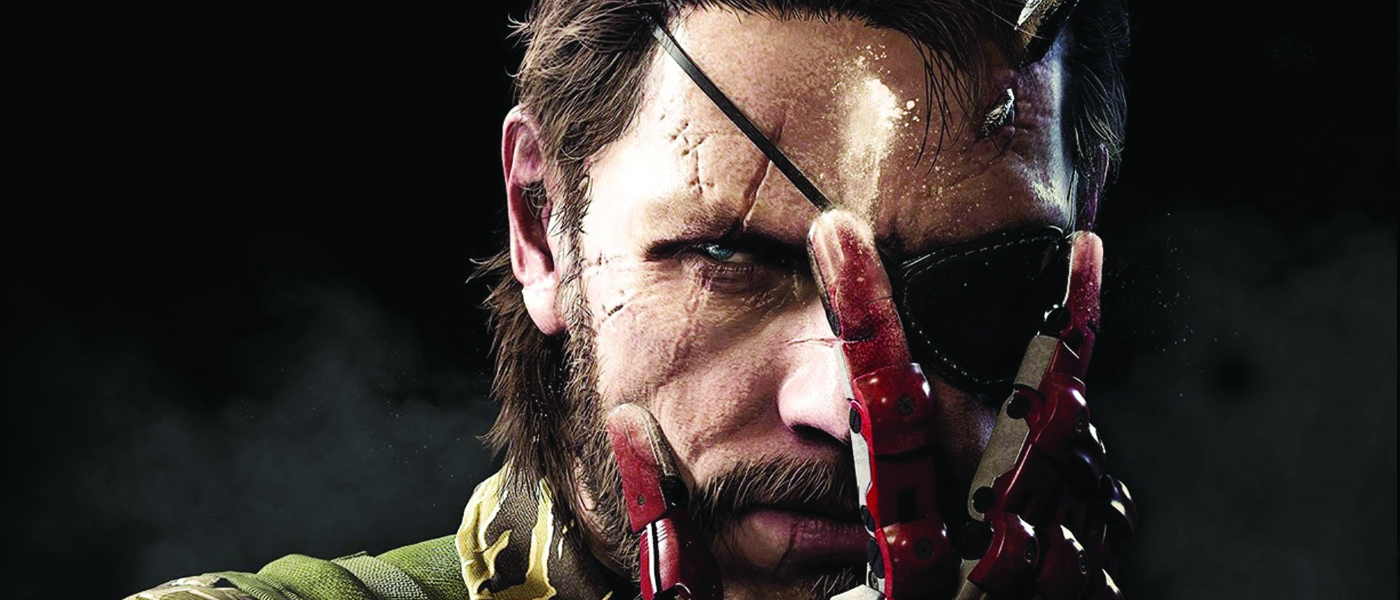
Announced in 2012, Metal Gear Solid V: The Phantom Pain is Kojima Productions’ upcoming stealth-adventure game. While it can serve as a standalone, it is intended as a sequel to Ground Zeroes, with both games comprising the larger Metal Gear Solid V.

In Metal Gear Solid V: The Phantom Pain, the Soviet invasion of Afghanistan has brought a new edge to the Cold War, and in 1984, a one-eyed man with a prosthetic arm appears in the country. Those who know him call him Snake; the legendary mercenary who was once swept from the stage of history and left in a coma by American private intelligence network Cipher. Snake is accompanied by Ocelot, an old friend who saved him from attack when he finally awoke.  Now, Snake’s former partner Kazuhira Miller is being held by the Soviet forces in Afghanistan. Snake must undertake a solo mission to rescue Miller and prove to the world that the legendary mercenary is not dead and gone. That first step will lead to a path of vengeance against the very Cipher that slaughtered so many of Snake’s men, and to a battle that will embroil the whole world…What started in Ground Zeroes… must finish with ”V.”
Now, Snake’s former partner Kazuhira Miller is being held by the Soviet forces in Afghanistan. Snake must undertake a solo mission to rescue Miller and prove to the world that the legendary mercenary is not dead and gone. That first step will lead to a path of vengeance against the very Cipher that slaughtered so many of Snake’s men, and to a battle that will embroil the whole world…What started in Ground Zeroes… must finish with ”V.”
 To Kojima’s credit, The Phantom Pain certainly felt like an immersive cinematic experience. Detailed cutscenes seamlessly gave way to gameplay and vice versa, with very little in the way of loading time, if at all.
To Kojima’s credit, The Phantom Pain certainly felt like an immersive cinematic experience. Detailed cutscenes seamlessly gave way to gameplay and vice versa, with very little in the way of loading time, if at all.
Perhaps to build on that, the game features an episodic structure, complete with credits and all. These credits give players an inkling of who they’ll be facing, as well as highlighting who was responsible for designing each episode. Each mission constitutes an episode, and can be undertaken in any order, allowing the player a choice in how they play the game. If that wasn’t enough, the game also featured an almost realistic day and night cycle, as well as shifting weather conditions. While I was not able to experience these features to their full extent, I recognise the potential that they can have on gameplay. All in all, I could find little fault with the game in regards to graphics, for Kojima certainly did well to create realism and bring every aspect of the game to life.
If that wasn’t enough, the game also featured an almost realistic day and night cycle, as well as shifting weather conditions. While I was not able to experience these features to their full extent, I recognise the potential that they can have on gameplay. All in all, I could find little fault with the game in regards to graphics, for Kojima certainly did well to create realism and bring every aspect of the game to life.
Now, despite its 80s setting, I found the early stages of the game to be decidedly era-neutral. Sure, the presence of Soviets in Afghanistan did allude to the Soviet-Afghan War, though this was just about the extent of it. While that may be harsh, and there certainly may be later stages of the game that disprove this, but I would have preferred to have seen more contextual references to help construct the game’s narrative.
 Missions in Metal Gear Solid V: The Phantom Pain take place mainly in large, open-world environments, with the game featuring areas such as the Afghan desert. In that example, it was clear that in bringing this world to life, great care was given to lock down every little detail. For one, the landscape was vibrant and living, with animals and rodents scattering as you approached them. Upon coming across a town, I also found myself able to take shelter in fully rendered building interiors.
Missions in Metal Gear Solid V: The Phantom Pain take place mainly in large, open-world environments, with the game featuring areas such as the Afghan desert. In that example, it was clear that in bringing this world to life, great care was given to lock down every little detail. For one, the landscape was vibrant and living, with animals and rodents scattering as you approached them. Upon coming across a town, I also found myself able to take shelter in fully rendered building interiors.
On a minor note, I felt there was a sort of episode imbalance early on, which caused a lull in the continuous thrill of the game. By that, I mean the choice to construct an entire (although very short) episode around a tutorial, which I believe could have easily been introduced into the game another way without really pausing the narrative. While the game ostensibly calls for the player to carry out missions using stealth, players are still given the strategic freedom to how they go about achieving their objectives. Unlike other stealth-based games, there was little in the way of penalties for breaking the silence and just going loud.
While the game ostensibly calls for the player to carry out missions using stealth, players are still given the strategic freedom to how they go about achieving their objectives. Unlike other stealth-based games, there was little in the way of penalties for breaking the silence and just going loud.
That said, I also found that the game’s many different elements catered to the style of different players – whether they wanted to creep by their enemies or go in guns blazing. For one, the continuous passage of time meant that guards would change shifts, providing an opportune time to strike. On another level, seeing fixed machine gun and anti-air emplacements was just a bit too alluring for me, and all my stealth went out the window. The game also marks the return of past features such as Mother Base and the need to build a private army (in this case, Diamond Dogs). Fans of the series will note that The Phantom Pain gives Mother Base more of an increased presence in the game, as it is now a visitable and explorable location. With its return, the player can also knock out and capture enemy combatants, manage them within their army (by way of the iDroid feature within the game), and research and develop technology for use on the battlefield.
The game also marks the return of past features such as Mother Base and the need to build a private army (in this case, Diamond Dogs). Fans of the series will note that The Phantom Pain gives Mother Base more of an increased presence in the game, as it is now a visitable and explorable location. With its return, the player can also knock out and capture enemy combatants, manage them within their army (by way of the iDroid feature within the game), and research and develop technology for use on the battlefield.
 Metal Gear Solid V is a game that always had a lot of potential. A great deal of this rests on the game’s replayability, as the player can return and approach missions from a range of different angles.
Metal Gear Solid V is a game that always had a lot of potential. A great deal of this rests on the game’s replayability, as the player can return and approach missions from a range of different angles.
I must also praise Kojima for offering up a game that is not simply engaging and cinematic, but is one that also grants the player some agency in how the story plays out. From the start, I was hooked, despite this being my first foray into the Metal Gear franchise. That being said, while the game serves as a sequel to Ground Zeroes, it works equally just as well as a standalone.
Metal Gear Solid V: The Phantom Pain is set for a worldwide release on September 1. Press Start Australia attended a review event for Metal Gear Solid V: The Phantom Pain in Sydney, Australia.



